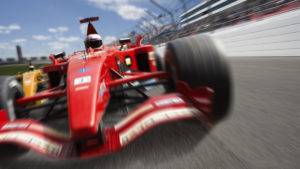Sensera’s chips can track anything but right now it’s mainly cows and trucks

Sensera's technology is used to track cattle. Pic: Getty.
Steve Jobs knew the best hardware would make Apple hard to beat, and chipmaker Sensera is following a similar track.
Sensera (ASX:SE1) makes its own MEMS chips, and with the purchase of ‘location awareness’ platform Nanotron earlier this month it also owns the medium through which data is collected and transmitted.
Micro Electro Mechanical Systems (or MEMS) are miniaturised electro-mechanical devices often used in sensors to measure things like temperature, pressure, chemicals, radiation or location.
Sensera bought Berlin-based Nanotron for €6.4 million ($9.6 million) in August, a deal it had promised as part of listing in December last year.
Sensera’s first full-year report yesterday revealed how big a deal Nanotron is for the company.
While the US microfabrication factory made $US1.2 million in revenue last year, largely from its two biggest clients, Sensera is looking to Nanotron to add the other $US5 million needed to bring it up to the target promised in its prospectus.
Chairman Matthew Morgan says Nanotron is on track, though he won’t say how close.
He expects a major Austrian customer Smartbow to underpin a forecast $US12 million revenue goal for 2018.
Tracking cows and trucks
Nanotron’s tracking technology is used in animal ear tags for livestock health and in the mining sector.
The Austrian ag-tech company Smartbow uses the location awareness system in ear tags for dairy farms. GE Mining is another customer.
It can determine the presence, proximity and location of people, animals and physical things.
“Nanotron not only provides the chip which sends the identifying signal but also the identifying software and anchor to record the signal,” Mr Morgan told Stockhead.
“The reality is we are a hardware company with a modest amount of software, looking to move up the value chain by acquiring software.”
Mr Morgan says it will give Sensera a “defensible” position in the $US93 billion global wireless sensor networks and Internet of Things (IoT) market.
MEMS are tiny machines
MEMS chips are an offshoot of the semiconductor chip that made Silicon Valley firms so famous. But instead they are made up of tiny ‘machines’ that do the work — miniature pumps, valves and accelerometers — hence the name ‘microelectromechinical systems’.
According to research firm Gartner, the kind of broad kind of chip the Nanotron system falls into accounts for just over a quarter of all silicon and MEMs chip sold globally.
While it seems obvious for farmers to want to be able to track their animals, or mining companies to better understand where their staff, or driverless vehicles, are when underground, Mr Morgan says accuracy has held this kind of system back.
“The reason why it’s taken so long is there are limitations in frequency,” he said. Sensera now has one of only three or four chips in the world can provide the kind of accuracy needed to measure within centimetres.
Huge potential
IoT Australia head Stuart Corner says it’s still early for location-based technology in Australia, but there is recognition that especially in agriculture and the health sector the market potential “is huge”.
Mr Corbner named recently listed Croplogic (ASX:CLI) as one example of where the technology can make unknowns known and fine-tune agricultural processes, saying investors had been “short-sighted” to drag it down to its current low of 13c.
With healthcare, where Sensera had originally been shopping for acquisitions, there are still issues around security and privacy, but an ageing population and the high cost of institutionalising people who need more attention at home will push tracking technology forward.
Share price volatility
Sensera’s share price has been bumpy.
“Every CEO you talk to gets frustrated by volatility in their share price. For me that’s been particularly frustrating,” Mr Morgan said.
Some investors had “aggressively” taken profits on good news rather than staying on.
In April the share price was driven as high as 45c on little news flow from the company and fell just as rapidly to a low of 27c. It closed Wednesday at 29.5c.
Mr Morgan hopes that once the company becomes more known it will attract more institutional investors and that will drive some of the volatility in the stock away.
UNLOCK INSIGHTS
Discover the untold stories of emerging ASX stocks.
Daily news and expert analysis, it's free to subscribe.
By proceeding, you confirm you understand that we handle personal information in accordance with our Privacy Policy.








